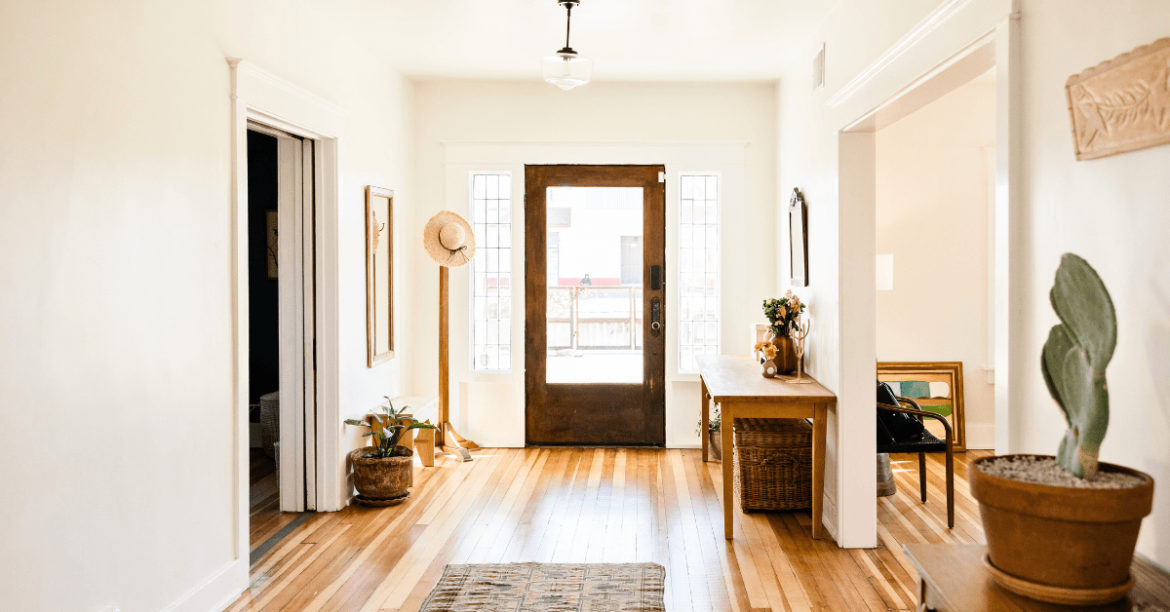As the world population ages, the concept of “aging in place” has become a preferred option among older adults instead of moving to a senior living facility. The desire to remain in familiar surroundings and maintain independence is universal, yet the factors influencing aging in place differ significantly between rural and urban areas.
This blog highlights the importance of bridging the gap between rural and urban aging in place initiatives. Besides, we will discuss the available age in place home care solutions. By sharing knowledge, inspiring stories, and practical solutions, we can encourage collaboration and innovation in the field of home modifications for the elderly.
What is aging in place?
In the realm of aging gracefully, the concept of “aging in place” has gained considerable traction in recent years. It refers to the desire of older adults to remain in their homes, surrounded by cherished memories and familiar spaces as they navigate the challenges and joys of their retirement years.
However, the ability to age in place is not without its hurdles, especially when addressing the unique needs of elderly individuals in rural and urban regions.
Impacts of home modifications on aging-in-place
Home modifications play a crucial role in supporting aging-in-place, which refers to an arrangement where elderly individuals can maintain their independence and comfort by residing in their own homes as they get older. These modifications can have several positive impacts on older individuals, including:
1. Enhanced safety
Home modifications can significantly improve safety and reduce the risk of accidents and injuries. For example, installing grab bars in bathrooms, stair railings, and adequate lighting can prevent falls. Non-slip flooring widened doorways to accommodate mobility aids like wheelchairs or walkers, and removing tripping hazards, enhancing the safety of the living environment.
2. Increased accessibility
As individuals age, their mobility may be compromised. Home alterations can enhance accessibility and simplify independent navigation for older adults within their homes. That can include installing ramps or chairlifts to overcome stairs, lowering countertops and cabinets in the kitchen, and adapting bathrooms with roll-in showers or walk-in bathtubs.
3. Improved independence
Home adaptations can foster autonomy and enable older adults to carry out their activities of daily living more effortlessly. For example, the installation of handrails and grab bars in strategic locations can offer stability and assistance during activities like bathing or using the restroom.
4. Enhanced comfort and convenience
Aging individuals may experience physical discomfort or limitations. Home modifications can help alleviate these challenges and enhance overall comfort. Examples include adjustable beds, ergonomic furniture, and installing thermostats and lighting controls at accessible heights for easy adjustment.
5. Emotional well-being
Aging in place can contribute to a sense of familiarity, independence, and emotional well-being for older adults. By making personalized adjustments to their homes, individuals can uphold a feeling of independence and influence over their living environment. This familiarity and stability can positively impact mental health and overall life satisfaction.
6. Cost-effectiveness
Home modifications can be a cost-effective alternative to moving to assisted living facilities or nursing homes. By adapting the home to accommodate changing needs, older adults can avoid the expenses associated with relocating and receive necessary support while remaining in a familiar and comfortable environment.
Aging in place home modifications suggestions for rural elderly
With their close-knit neighborhoods and limited resources, rural communities require creative approaches to address the accessibility and healthcare needs of aging residents. Here are some aging in place home modification suggestions for the rural elderly:
1. Entrance and exits
- Install a sturdy porch with a ramp and non-slip surface for easy access.
- Consider adding a covered porch with seating to provide a shaded resting area.
- Install a doorbell that can be heard from outside to ensure visitors are easily noticed.
2. Bathroom modifications
- Install a walk-in bathtub with handrails and a comfortable seat for safety and convenience.
- Consider installing a bidet or a handheld showerhead for improved hygiene and ease of use.
- Install raised toilet seats with armrests to assist with sitting and standing.
3. Kitchen adaptations
- Lower the height of countertops and sinks to accommodate wheelchair users.
- Install pull-out shelves and drawers for easy access to pots, pans, and utensils.
- Consider installing a wall-mounted oven and cooktop to reduce bending or reaching.
4. Lighting and electrical
- Install bright LED lighting both indoors and outdoors to ensure visibility in rural areas with limited street lighting.
- Place light switches at a lower height for easy access for wheelchair users.
- Install a backup generator to ensure power continuity during rural power outages.
5. Flooring and safety
- Use slip-resistant flooring materials throughout the house, including hallways and bathrooms.
- Install handrails on each side of staircases and ensure they are well lit.
- Create clear pathways in the yard, removing any tripping hazards like rocks or uneven terrain.
Aging in place home modifications suggestions for urban elderly
Urban environments present their own set of considerations. With bustling streets, high-rise buildings, and specialized services, urban elderly individuals face challenges related to mobility, social isolation, and adapting to rapidly changing cityscapes. Here are some aging in place home modification suggestions for the urban elderly:
1. Entrance and exits
- Install a wheelchair-accessible entrance with a ramp or a vertical platform lift.
- Consider installing a keyless entry system or smart locks for convenience and security.
- Install a well-lit pathway with motion-sensor lights from the street to the entrance.
2. Bathroom modifications
- Install a curb-less walk-in shower with a built-in bench and grab bars for easy access and safety.
- Consider installing a toilet with a bidet function or a raised toilet seat with armrests.
- Install lever-style faucets and shower controls for easy operation.
3. Kitchen adaptations
- Lower the height of countertops and sinks to accommodate individuals who use wheelchairs.
- Install easy-to-reach pull-out shelves and drawers for storage.
- Consider installing a side-opening wall oven for easier access and visibility.
4. Lighting and electrical
- Install bright, energy-efficient LED lighting throughout the house for improved visibility.
- Use rocker switches instead of traditional toggle switches for easier operation.
- Consider placing electrical outlets at a higher position to minimize bending or reaching.
5. Flooring and safety
- Use non-slip flooring materials, such as textured tiles or low-pile carpets, to prevent falls.
- Install handrails on either sides of staircases and ensure they are well lit.
- Install a secure handrail along any outdoor steps or pathways.
Age in place home care solutions
While home modifications can make aging in place a lot smoother, there are also various age in place home care solutions available to support seniors in their daily tasks and ensure their safety and well-being. These solutions range from:
- Personal care services: Assisting with daily activities like bathing, dressing, and medication reminders.
- Home health care: Providing medical services at home, such as medication administration and rehabilitation therapies.
- Medical alert systems: Devices that allow seniors to call for help during emergencies.
- Remote health monitoring: Tracking vital signs remotely and alerting healthcare providers of any concerning changes.
- Smart home technology: Automating tasks and enhancing security with voice-activated assistants, smart locks, and video doorbells.
- Fall detection systems: Using sensors to detect falls and alert caregivers or emergency services.
- Medication management systems: Helping seniors organize and manage their medications.
- Transportation services: Assisting with transportation for medical appointments, social activities, and shopping.
Final thoughts
To conclude, while there are distinct suggestions for aging in place home modifications for rural and urban elderly individuals, there may still be some overlaps. That is because certain modifications are universally beneficial for improving accessibility, safety, and convenience for elderly individuals, regardless of whether they live in a rural or urban setting.
We hope that these suggestions will be a helpful starting point for creating safe, accessible, and comfortable living environments. Remember to reflect on individual needs and consult with professionals to tailor the modifications to specific requirements.
Related articles:
FAQs
Is aging in place cost effective?
Aging in place can be cost-effective depending on individual circumstances, including the need for home modifications, healthcare costs, availability of community support services, and personal preferences.
It may be more affordable than moving to a nursing home or assisted living facility, but careful assessment of the specific situation and associated costs is necessary.
How much does a certified aging in place specialist make?
A Certified Aging in Place Specialist (CAPS) is a trained professional who assesses homes and recommends modifications. They consider factors like mobility, fall prevention, ease of use, and overall safety when making recommendations.
How to become a certified aging in place specialist?
To become a Certified Aging-in-Place Specialist (CAPS):
- Complete the required educational courses offered by the National Association of Home Builders (NAHB).
- Gain at least two years of experience in the remodeling industry or a related field.
- Submit an application to the NAHB, including proof of experience and completion of the required courses.
- Pass the CAPS exam.
- Maintain certification by fulfilling continuing education and training requirements every three years.

